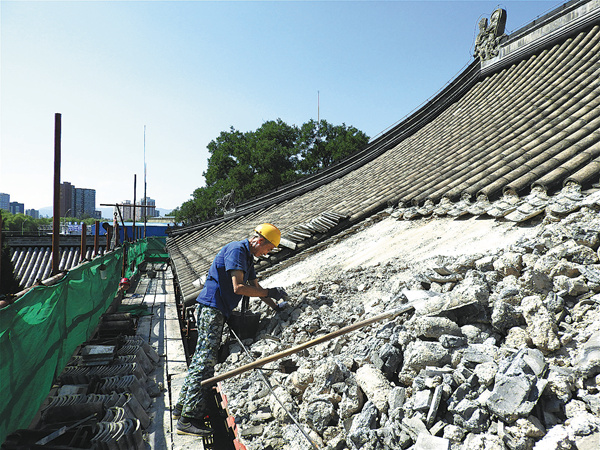

"In renovation, there's little room for us to show creative minds if we want to respect history," Zhang says. "Modern cement and glues are not allowed. Even the nails we use to consolidate walls are made of bamboo."
As an essential process for consolidation, flax is twisted around the bamboo nails and spread across the surface of wall before it is painted.
"Of course, the traditional process will be more costly, but it's worthwhile to pass down the traditional skills," Zhang says.
All earthen bricks used in the renovation are handmade. Compared with those produced by machines, the surfaces of these bricks are rougher, which means restorers had to spend extra time to cut and polish them.
And even the devices used for cutting the bricks are handmade, as are many other tools used in the renovation.
According to Wang, Wanshou Temple is a good example to use in educating people about the construction processes in traditional Chinese architecture.
Files relevant to this renovation will be introduced through multimedia channels to the public after the work is completed, according to Wang. It will also be part of an upcoming exhibition at Beijing Art Museum after its reopening.